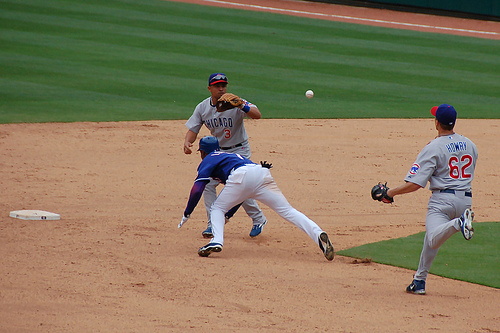Rundown on:
[Wikipedia]
[Google]
[Amazon]
 In
In
 In
In baseball
Baseball is a bat-and-ball sport played between two teams of nine players each, taking turns batting and fielding. The game occurs over the course of several plays, with each play generally beginning when a player on the fielding t ...
, a rundown, informally known as a pickle or the hotbox, is a situation that occurs when the baserunner is stranded between two bases, also known as no-man's land, and is in jeopardy of being tagged out. When the baserunner attempts to advance to the next base, he is cut off by the defensive player who has a live ball, and attempts to return to his previous base before being tagged out. As he is doing this, the defender throws the ball past the baserunner to the defender at the previous base, forcing the baserunner to reverse directions again. This is repeated until the runner is put out or reaches a base safely.
A rundown can be escaped if a fielder makes an error
An error (from the Latin ''error'', meaning "wandering") is an action which is inaccurate or incorrect. In some usages, an error is synonymous with a mistake. The etymology derives from the Latin term 'errare', meaning 'to stray'.
In statistics ...
, the runner gets around the fielder with the ball without running out of the baseline, a fielder throws the ball elsewhere (e.g., toward home plate if another runner is trying to score), or the runner manages to get by the fielder without the ball while there is no other fielder to cover the runner's destination base.
Intentional rundown
It is possible for a runner on one of the other bases to create an intentional rundown to allow a runner on third to score.Drilling
Teams and players do practice for this situation in drills in practice or warmups.Strategy
There are a variety of strategies for how the defense will deal with trying to get a runner out who has been caught in a pickle. Different teams, players, and coaches will follow different strategies.References
{{Baseball Baseball plays Baseball rules Baseball terminology